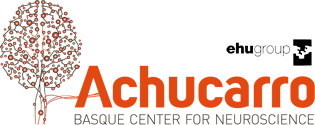About Nicolás Achúcarro
(1880-1918)
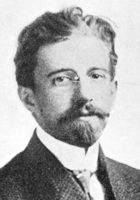
Nicolás Achúcarro (æ tʃ uː k æ r aʊ) y Lund was born into a bourgeois and educated family on June 14, 1880 in the Old Quarter of Bilbao.
At the age of ten, Achúcarro entered the Institute of Bilbao, where the renowned philosopher and writer Miguel de Unamuno taught Latin. When he was about to turn fifteen (1895), he graduated from the equivalent to high school with outstanding grades both in science and letters.
In October 1895 he left Bilbao for studying during 16 months in the Gymnasium of Wiesbaden (Germany), where he prepared his accession to the School of Medicine of the University of Madrid (currently Complutense University of Madrid).
Achúcarro was admitted to the University of Madrid to study Medicine at the age of 17 (1897-1898), after passing the examination of the preparation course at the University of Zaragoza. In his first year he was awarded the prize “Martinez Molina” for his anatomical knowledge; the following year was awarded the Fourquet prize, a popularity award voted among the students and colleagues. In that second year he attended the practical classes of physiology of Prof. Gomez Ocaña and had a first contact with the histology studies of Santiago Ramon y Cajal.
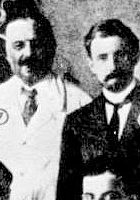
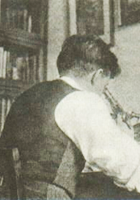
In 1899 he departed to Marburg (Germany) with his brother Juan Luis, to follow various courses in pathology, chemistry and physiology. In the following year he was forced to return home because his brother came down with tuberculosis. Back in Madrid, he prepared by his side the last three years of the graduation in medicine.
His first research experience is at the laboratory of Prof. Luis Simarro where is worked in histopathology. After this spell, he set a small laboratory in the attic of his family home in Neguri, Bilbao, to continue with his work during the summer and vacation.
He graduated in Medicine at 24 years old in 1904. His restlessness and hunger for knowledge (together with his well-off condition) drove him to visit the main laboratories of the time. Between 1904 and 1905 in Paris visited the clinic of Pierre Marie at the Salpêtrière (Paris, France), and attended the lectures of Professor Babinski. Then he meets the German Lewandowsky and Italian Catola, who had a decisive influence on his subsequent career. During this time began to prepare his collection of anatomy-pathology of mental illnesses.
In the summer of 1905, after a brief return to Bilbao, he traveled to Florence (Italy), this time to the Clinic of San Salvi, where the Florentine neuropsychiatrists Tanzi and Lugaro introduced him in the study of mental illnesses. He then moved back to Munich (Germany), where he stayed three years working at the clinic of Kraepelin, in the neuropathology laboratory of Prof. Alzheimer, where he prepared his doctoral thesis “Contribution to the study of the pathological anatomy of rage” that he defended in Madrid in December 1906 with outstanding marks.
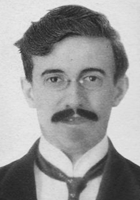
In 1908, at the age of 28, was recommended by Alzheimer to conduct the Laboratory of Pathological Anatomy of the Federal Psychiatric Hospital in Washington DC (USA). To prepare the trip Achúcarro first moved to Paris (France), where he visited various psychiatric hospitals and wrote a paper on rod cells (Stäbchenzellen), neuroglial cells, granuloadipose mast cells in the Ammon horn of the rabbit hippocampus. Then, he continued his journey to London and Liverpool (UK) before shipping to America, where he met the father of modern physiology, Sir Charles Scott Sherrington.
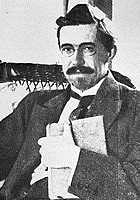
During his stay in USA, between 1908 and 1910, he developed an intense scientific activity and managed to communicate his results to the main English and German specialized magazines.
In 1910 he returned to Madrid where he was appointed physician at the Provincial Hospital, where he became fully devoted to research. At this time, he collaborated with the Bulletin of the Spanish Society of Biology and with Santiago Ramón y Cajal at his Laboratory of Biological Research, on topics from histology to physiology of glia, and also participated in the launching of the Students’ Residence laboratories, an institution promoted by a prominent intellectual at the time, Francisco Giner de los Rios.
In 1912 he was invited by Carl Gustav Jung to give a series of courses on mental illness in the Fordham University (New York, USA) and was named Doctor Honoris Causa [1,2] by that University on September 11th 1912. On his return to Spain, with the support of Cajal and the sponsorship of the Board of Advanced Studies, he was designated head of the laboratory where other relevant scientific personalities (Rodríguez Lafora, Del Rio Ortega, Sacristan, Gayarre, Fortun and others) worked.
The first symptoms of his fatal illness appeared in 1915, so the following year he had to abandon some of his activities to retire for a year at a haven in El Pardo (Madrid). In July 1917, deeply stricken by his disease, he decided to return to Bilbao (Neguri). Although initially thought of tuberculosis as a possible source of his illness, over time the symptoms became differentiated. Progressively he became paraplegic and suffered itching and irresistible pressure ulcers. Was himself, who after reading a text of medical conditions, recognised the description of his own symptoms and self-diagnosed Hodgkin’s disease. He died on April 23, 1918, at age 37.
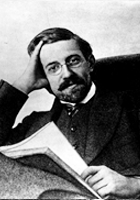
The famous pianist, Joaquín Achucarro, is Nicolás’ nephew.
